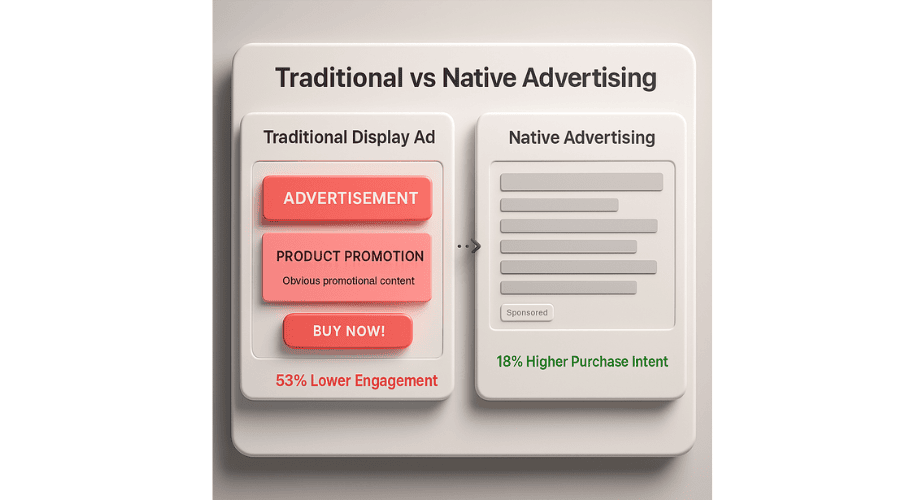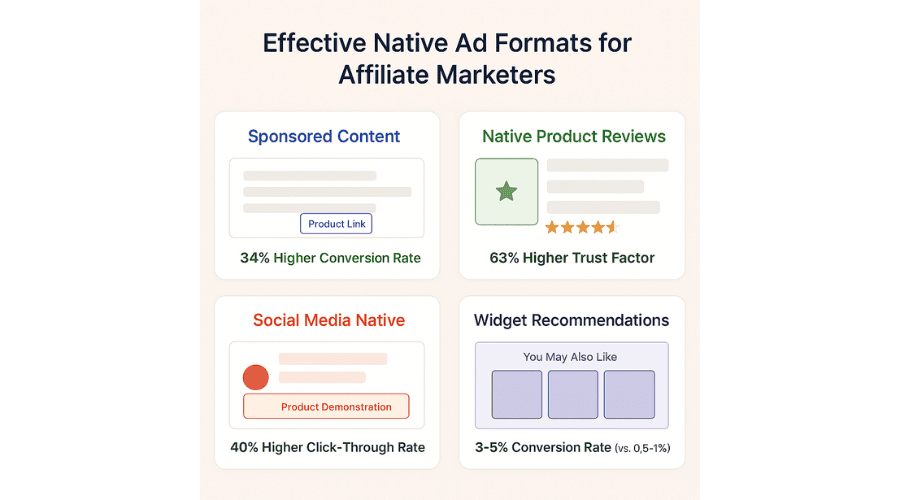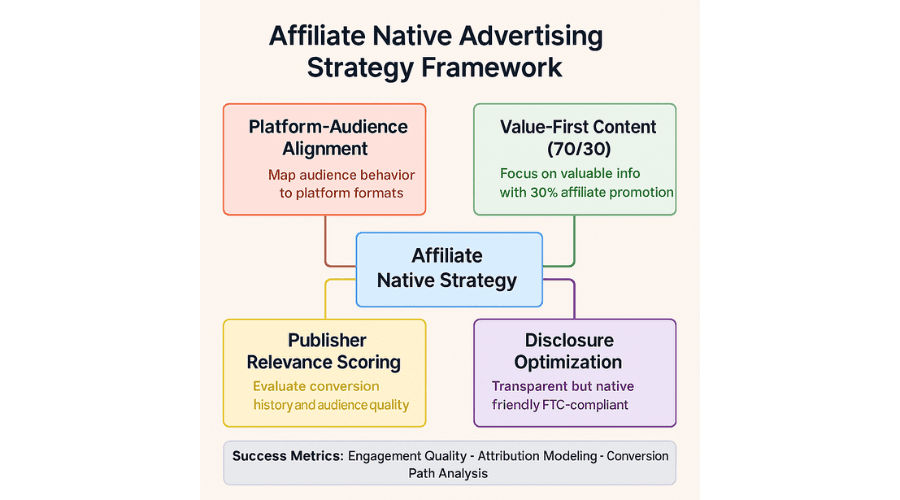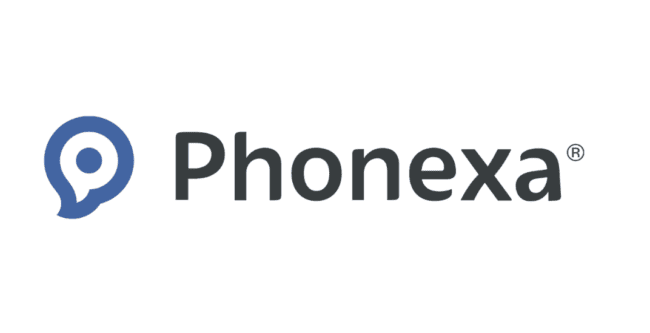The Ultimate Guide to Native Advertising For Affiliates

The Affiliate Marketer’s Guide to Native Advertising: Strategies for Authentic Promotion in a Skeptical World
Your promotional strategy can make the difference between ignored links and consistent conversions. While many affiliate marketers continue to rely on traditional display advertising, the data tells a compelling story: native advertising isn’t just an alternative—it’s becoming essential for affiliates who want to survive and thrive.
Consider this reality check: consumers view native ads 53% more frequently than display ads, and these seamlessly integrated promotions generate an 18% higher purchase intent. For affiliate marketers operating on thin margins and performance-based compensation, these numbers aren’t just interesting statistics—they represent the difference between campaign profitability and wasted opportunity.
The Native Advantage: Why Traditional Affiliate Promotions Are Losing Ground
The traditional affiliate playbook—banner ads, sidebar promotions, and interstitials—faces a fundamental problem: they scream “advertisement” to increasingly ad-savvy consumers. Today’s audiences have developed sophisticated advertising radar, with research showing that 86% of consumers suffer from “banner blindness,” automatically tuning out content they perceive as promotional.

Native advertising offers a critical alternative by addressing the core challenge of modern digital marketing: gaining attention without triggering defensive consumer reactions.
“The affiliate marketers seeing the highest conversion rates today are those who’ve mastered the art of promoting without appearing promotional,” observes digital marketing strategist Rishi Lakhani. “Native advertising is the natural evolution of this principle—it allows affiliate marketers to showcase products and services within contexts where consumers are already engaged and receptive.”
Native Advertising Formats That Convert for Affiliates
Not all native advertising approaches deliver equal results for affiliate marketers. Here are the formats that data shows work best for driving affiliate conversions:

1. Sponsored Content with Strategic Link Placement
What it is: Long-form articles, videos, or podcast episodes that provide genuine value while naturally incorporating affiliate products as solutions.
Why it works for affiliates: Builds credibility before introducing promotional elements, leading to 34% higher conversion rates than traditional affiliate links according to recent industry studies.
Action step: Develop content templates that follow a proven structure: identify a problem your audience faces, provide general advice and context, then naturally introduce your affiliate product as part of the solution landscape.
2. Native Product Reviews and Comparisons
What it is: In-depth, authentic-feeling evaluations of products that match the publication’s editorial style while incorporating your affiliate links.
Why it works for affiliates: Meets consumers at the comparison stage of the buying journey, with studies showing 63% of consumers trust product reviews more than any other content format.
Action step: Create a standardized review framework that balances genuine critical assessment (including cons) with highlight features that drive conversions. Consumers trust reviews that acknowledge product limitations.
3. Social Media Native Ads with Direct Response Elements
What it is: Posts or videos that match the organic content of platforms like Instagram, TikTok, or Facebook while incorporating clear calls to action.
Why it works for affiliates: Combines the trust factor of native content with the conversion power of direct response, generating up to 40% higher click-through rates for affiliates compared to standard social ads.
Action step: For each platform, study the top-performing organic content formats and adapt your affiliate promotions to mirror these styles while maintaining clear tracking links and calls to action.
4. Native Widget Recommendations
What it is: “You may also like” or “Recommended products” widgets that blend with the site design while showcasing affiliate offers.
Why it works for affiliates: Leverages the psychological principle of contextual relevance, with data showing these widgets can drive 3-5% conversion rates compared to 0.5-1% for standard display ads.
Action step: Work with publishers to ensure your affiliate products appear in recommendation widgets by providing higher commission rates or exclusive offers for this premium placement.
Building Your Affiliate Native Advertising Strategy: A Framework
Successful native advertising for affiliate marketers doesn’t happen by accident. Here’s a systematic approach to developing campaigns that convert:

1. Platform-Audience Alignment Analysis
Before creating native content, map the relationship between:
- Where your target consumers spend their time online
- The platforms that accept native advertising formats
- The typical purchase mindset on each platform
This three-factor analysis reveals whether you should focus on educational content (perfect for blogs and YouTube), inspiration (ideal for Instagram and Pinterest), or direct problem-solution content (effective on review sites and forums).
2. Publisher Relevance Scoring
Not all native advertising opportunities deliver equal value for affiliates. Develop a scoring system that evaluates potential publishers based on:
- Audience alignment with your ideal customer profile
- Content engagement metrics (time on page, comment frequency)
- Conversion history with similar affiliate offers
- Domain authority and trust factors
This prevents the common mistake of pursuing high-traffic placements that don’t actually convert for affiliates.
3. Value-First Content Development
The most successful affiliate native advertising follows what industry expert Ann Handley calls the “70/30 rule”: 70% valuable information, 30% promotion. This ratio ensures your content meets the publication’s quality standards while still driving affiliate results.
Create templates for different native formats that ensure this balance:
- Problem-solution narratives that position affiliate products as natural answers
- Resource collections that include affiliate products alongside non-monetized recommendations
- Case studies that demonstrate product benefits through storytelling
4. Disclosure Optimization
FTC guidelines require clear disclosure of affiliate relationships, but how you implement these disclosures significantly impacts conversion rates. A/B testing reveals that:
- Disclosures placed after establishing content value (rather than at the very beginning) maintain reader trust while satisfying requirements
- Language framing recommendations as “products we genuinely love” alongside disclosure statements preserves conversion rates
- Integrated disclosures that match site styling perform 15% better than generic, bold-faced warnings
Advanced Tactics: The Next Level of Affiliate Native Advertising
Native Retargeting Sequences
Rather than viewing native advertising as a one-time placement, sophisticated affiliate marketers create multi-touch native experiences:
- Initial native content introduces concepts and builds awareness
- Pixel-based retargeting delivers native-style follow-up content addressing specific objections
- Final conversion-focused native content appears when engagement history indicates purchase readiness
This sequenced approach shows 36% higher eventual conversion rates compared to single-placement strategies.
Publisher Co-Creation Partnerships
Instead of simply paying for placement, work directly with publishers to co-create native content that serves their audience while featuring your affiliate products. This approach:
- Leverages the publisher’s deep understanding of their audience
- Creates content that truly matches the publication’s voice and style
- Results in placements that feel more authentic and generate 23% higher engagement
Dynamic Native Content Optimization
The most sophisticated affiliate marketers are now using AI-powered systems to:
- Test multiple headlines, images, and content angles simultaneously
- Automatically allocate budget to the highest-performing variations
- Create personalized native experiences based on user behavior and preferences
This approach can increase conversion rates by 30-45% compared to static native content.
Measuring Native Advertising Success for Affiliates
The metrics that matter for affiliate native advertising differ from traditional advertising goals:
Attribution Modeling
Implement multi-touch attribution that recognizes native advertising’s role in:
- Initial brand discovery (first-touch attribution)
- Consideration development (middle-touch attribution)
- Final conversion support (last-touch attribution)
This prevents undervaluing native content that begins the customer journey but doesn’t generate immediate conversions.
Engagement Quality Metrics
Beyond simple click-through rates, measure:
- Time spent with native content
- Scroll depth and attention metrics
- Content sharing and amplification
- Return visits after initial engagement
These metrics reveal whether your native content is building the trust necessary for affiliate success.
Conversion Path Analysis
Track the specific journeys consumers take after engaging with native content:
- How many additional content pieces do they consume?
- What percentage return directly via bookmarks or search?
- Which content combinations lead to highest conversion rates?
This data helps optimize your entire affiliate content ecosystem, not just individual native placements.
The Future of Affiliate Native Advertising
As we look ahead, several emerging trends will reshape how affiliate marketers use native advertising:
AI-Generated Personalized Native Experiences
Machine learning algorithms will create dynamically personalized native content that adapts based on individual user interests, behaviors, and purchase history. Early adopters report conversion improvements of 35-50%.
Voice and Audio Native Integration
With podcast listening and voice search continuing to grow, affiliates are developing new native formats that seamlessly integrate into audio content without disrupting the listening experience.
Native Video Commerce
Shoppable video content that maintains the natural, non-promotional feel of native advertising while enabling direct purchases represents the fastest-growing opportunity for affiliate marketers.
The Path Forward: Building Brand Affinity Through Native Strategies
Perhaps the most significant benefit of native advertising for affiliate marketers extends beyond immediate conversions. By aligning your promotional content with publishers and platforms that share your target audience’s values, you build lasting brand affinity.
This alignment creates a virtuous cycle where consumers begin to trust your recommendations inherently, resulting in:
- Higher lifetime customer value
- Increased recommendation and referral rates
- Stronger resilience against competitive offerings
For affiliate marketers focused on sustainable, long-term growth rather than quick commissions, this brand affinity represents the ultimate competitive advantage in an increasingly crowded marketplace.
Taking Action: Your 30-Day Native Advertising Roadmap
To implement these strategies effectively, follow this 30-day plan:
Days 1-7: Audit and Analysis
- Evaluate current affiliate promotion performance
- Identify top-performing publishers in your niche
- Analyze competitors’ native advertising approaches
Days 8-14: Strategy Development
- Define your unique value proposition for native content
- Create templates for 3-5 native content formats
- Develop your disclosure approach and language
Days 15-21: Initial Implementation
- Produce your first native content pieces
- Establish baseline metrics for performance
- Deploy initial test campaigns across 2-3 platforms
Days 22-30: Optimization and Scaling
- Analyze initial performance data
- Refine approaches based on engagement metrics
- Scale investment in top-performing formats and platforms
The research is clear: affiliate marketers who master native advertising consistently outperform those relying solely on traditional promotional approaches. The question isn’t whether you should incorporate native strategies, but how quickly you can implement them before your competitors do.
Your audience is waiting for valuable content that solves their problems—content that happens to include your affiliate recommendations. Are you ready to deliver it?






